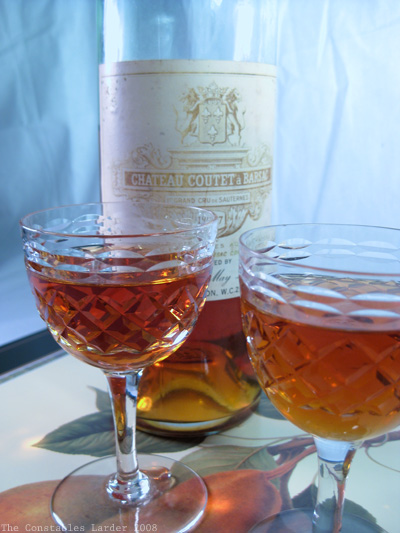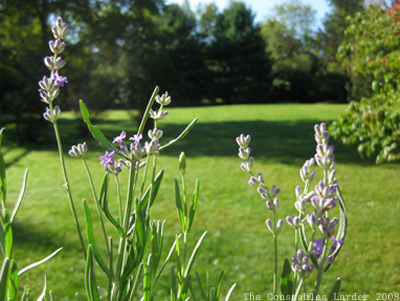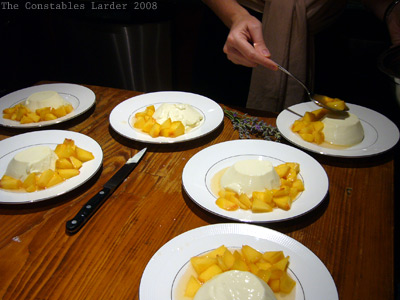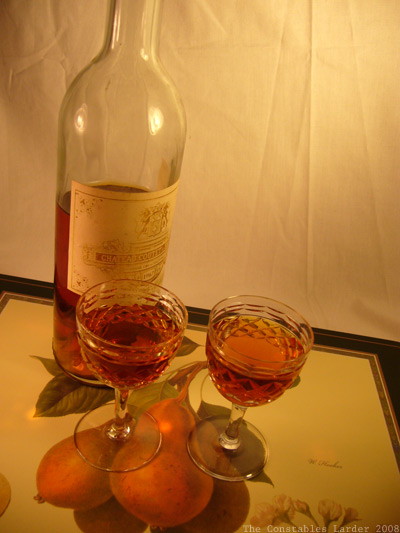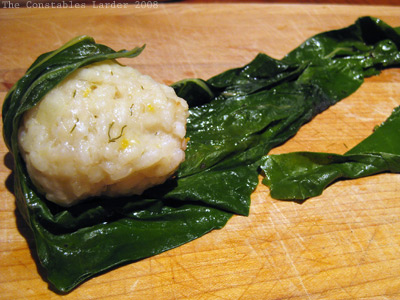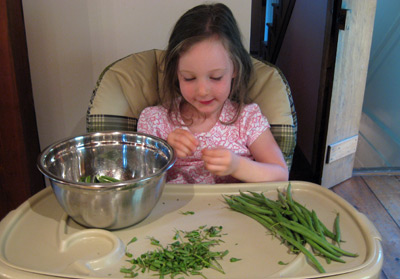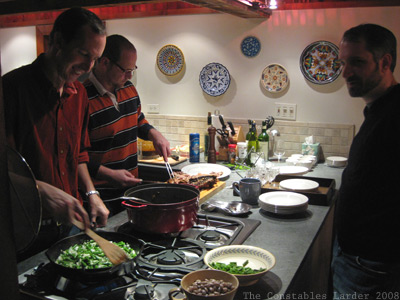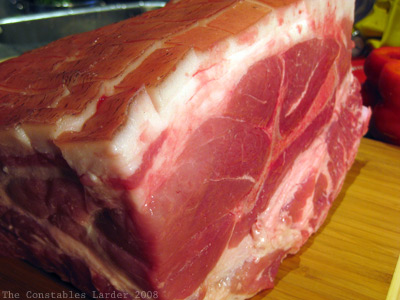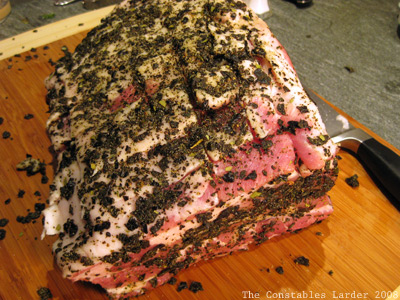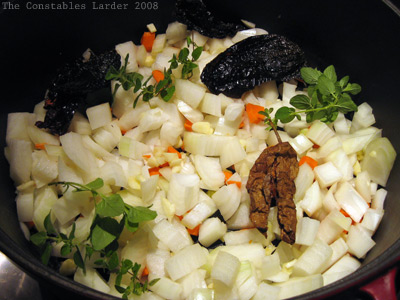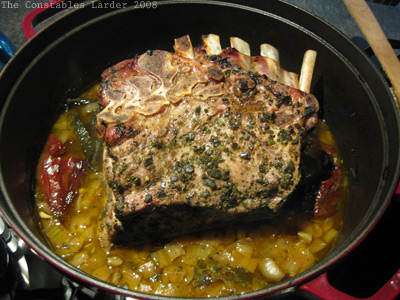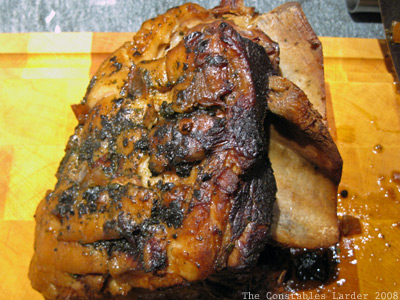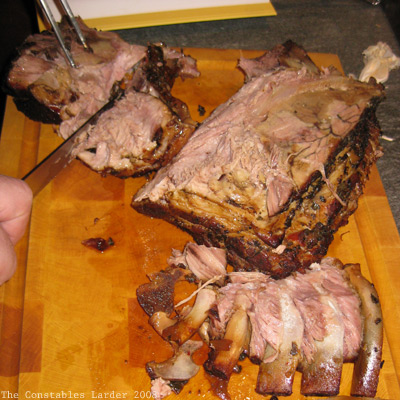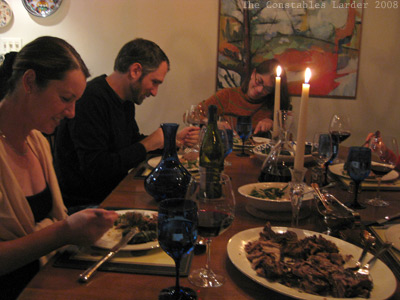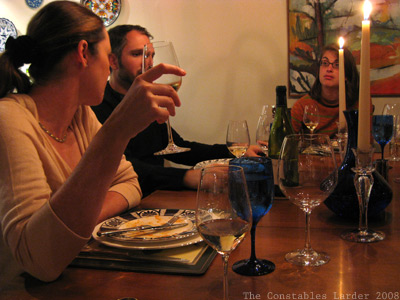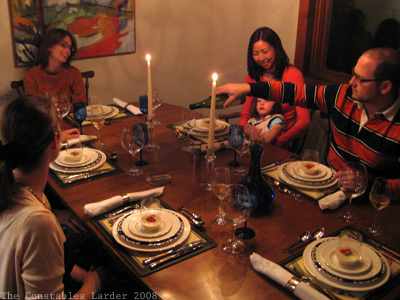You can sense it in American kitchens, our restaurant conversations, and across the food blogosphere: a newfound appreciation of good food prepared from fresh, local ingredients. This trend has been building for a long time, and no figure has played a more inspirational role than Alice Waters, chef/owner of Chez Panisse in Berkeley. Waters is part of a long lineage of culinary masters inspired by the food from the south of France – that amazing intersection of French, Italian and Mediterranean flavors, and where fresh and local are a way of life.
We were thrilled to participate in Foodbuzz’s 24, 24, 24 blogosphere event, astounding in its scope, with 24 food blogs around the world experiencing and sharing 24 meals over a 24 hour period. What better way to take part than to celebrate Alice Waters and her place in this historical line of chefs bringing the south of France to the world. In doing so, we wanted to transport a taste of Provence to Stone Ridge, NY, a small town in the the foothills of the Catskill mountains.
We crafted a meal tracing the development of this movement, with each course inspired by one of four culinary greats, in chronological order:
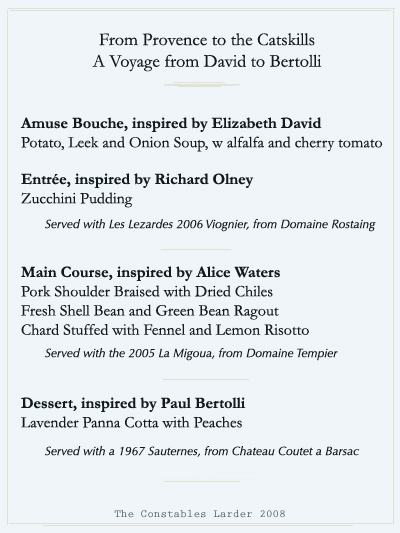
For those less familiar with some of the chefs named above, Elizabeth David first published Mediterranean Food in 1950, followed by French Country Cooking in 1951. In her foreword to the American compilation of David’s cookbooks, Alice Waters writes that meeting David was “the thrill of my life.” Waters was also tremendously influenced by Richard Olney, the American who lived near the Domaine Tempier vineyard (hence the choice of wine for the main course) in the south of France, and who wrote such well-known books as the incongruously named Simple French Food (his recipes are anything but simple). And completing the nexus of people around Alice Waters, we have Paul Bertolli, a well-known chef who worked for Alice at Chez Panisse before spreading his own wings. In 2003, Bertolli published the fascinating Cooking by Hand cookbook.
The Dinner
Our goal was to work with as local and fresh ingredients as possible. The growing season here in the Catskills is winding down, but still strong. We started out with a trip to a local farm, Gill’s, and made our final meal decisions based on the bounty laid before us.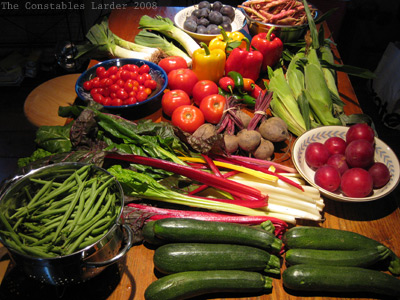
Also in keeping with the local theme, our pork came from a New York farm, courtesy of the fabulous Fleisher’s butcher in Kingston. We fended off hunger in the countdown to dinner with a cows milk cheese called Toussaint, from the Sprout Creek Farm in New York.
We were joined at this feast by four good friends, Mike and Rebecca G, and Mike and Sumi D, who showed angelic patience as we cooked and plated and paused for a photograph here and there.
In order to keep length manageable, and thus this all readable, we have described each dish making up the meal in the six following posts, and listed out the recipes.
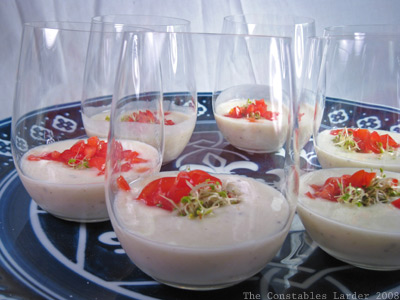
Potato, Leek and Onion Soup, topped with alfalfa and cherry tomato
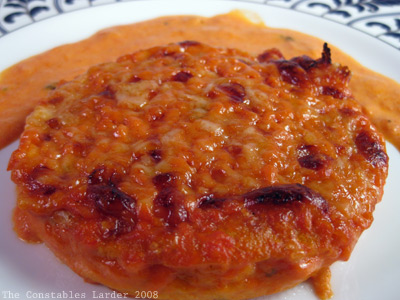
Zucchini Pudding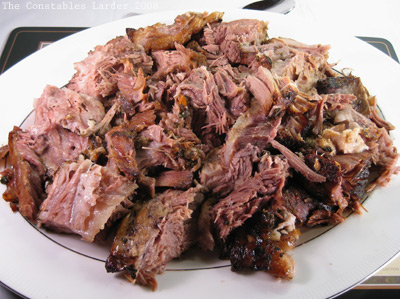
Pork Shoulder Braised with Dried Chiles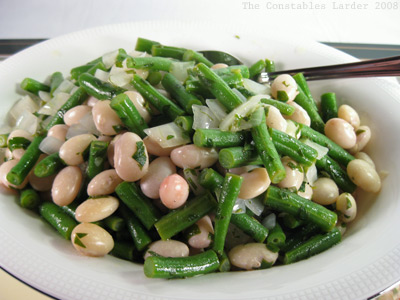
Fresh Shell Bean and Green Bean Ragout
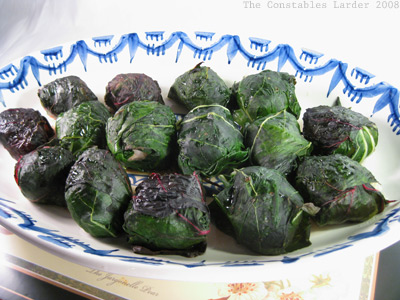
Chard Stuffed with Fennel and Lemon Risotto
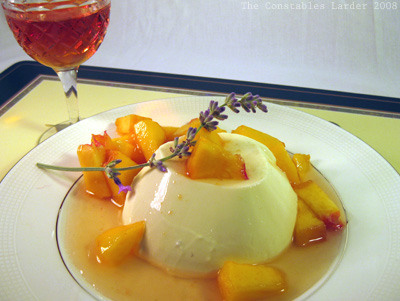
Lavender Panna Cotta with Peaches
We hope you enjoy the above posts, which include more pictures and thoughts, and you can also see the full set of photos from the dinner at our flickr set. We will leave you with a few favorite shots.
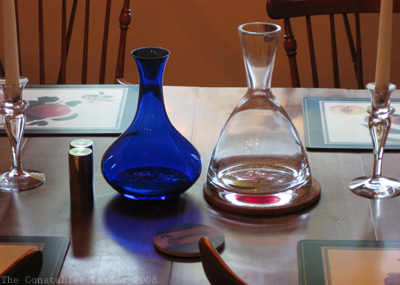
Morning light and a memory of the meal
In Conclusion
I want to end by commending and thanking Foodbuzz for challenging its community to produce an ambitious global food event. This project was a huge undertaking, but tremendously fun at the same time. I can’t wait to read the 23 other posts that all were written today, and I hope to update this post with links to the other 24, 24, 24 posts as soon as I can. For now, check out the list at Foodbuzz’s 24 page.

